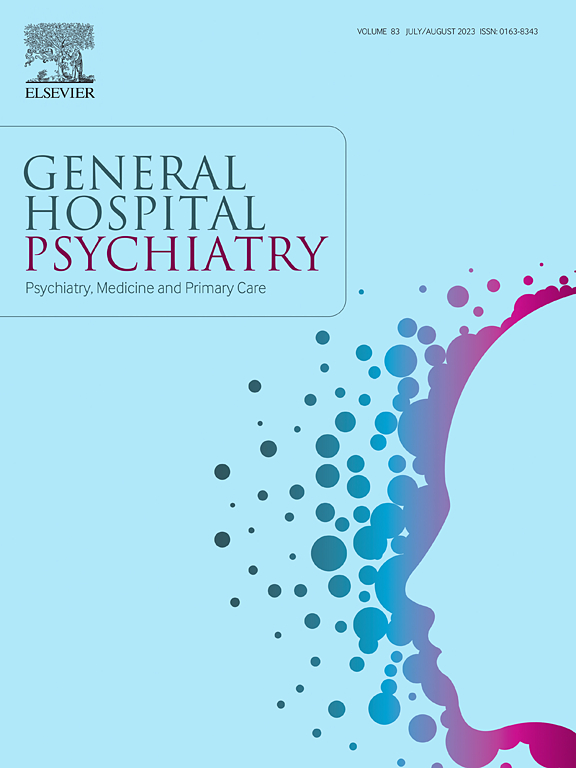Joint associations of restless sleep and loneliness with cardiovascular diseases in middle-aged and older Chinese adults: A national prospective cohort study
IF 3.7
2区 医学
Q1 PSYCHIATRY
引用次数: 0
Abstract
Background
Restless sleep and loneliness are common in older adults and may contribute to cardiovascular disease (CVD) risk. However, the joint associations of these factors with incident CVD have not been fully elucidated.
Methods
The China Health and Retirement Longitudinal Study (CHARLS) is an ongoing nationally representative prospective cohort study initiated in 2011. The primary outcome was incident CVD, defined by self-reported physician diagnoses of heart disease or stroke during follow-up (2011–2018). Cox proportional hazard models were used to calculate hazard ratios (HRs) for CVD, adjusting for demographic, lifestyle, and health-related factors.
Results
Among 12,212 participants (mean [SD] age, 58.39 [9.34] years; 48.4 % men), 2353 (19.3 %) participants have both restless sleep and loneliness at baseline. During the 7 years of follow-up, 2323 experienced CVD. Restless sleep (hazard ratio [HR], 1.28; 95 % confidence interval [CI], 1.18–1.40) and loneliness (HR, 1.31; 95 % CI, 1.19–1.43) were independently associated with increased CVD risk. Participants with both restless sleep and loneliness had a 53.0 % higher risk of CVD (HR, 1.53; 95 % CI, 1.37–1.71) compared with those with neither. Synergistic interactions between restless sleep and loneliness on CVD were observed on both the multiplicative (HR, 1.36; 95 % CI, 1.20–1.54) and additive scales (synergy index [SI], 1.20; 95 % CI, 1.07–2.81). Similar results were observed for stroke and heart disease.
Conclusions
The joint presence of restless sleep and loneliness increases CVD risk, suggesting that addressing both factors may help mitigate CVD risk in middle-aged and older adults.
中国中老年人不安宁睡眠和孤独感与心血管疾病的联合关联:一项全国前瞻性队列研究
背景:失眠和孤独在老年人中很常见,并可能导致心血管疾病(CVD)的风险。然而,这些因素与心血管疾病的联合关联尚未完全阐明。方法中国健康与退休纵向研究(CHARLS)是2011年启动的一项具有全国代表性的前瞻性队列研究。主要结局是心血管疾病的发生率,由随访期间(2011-2018年)自我报告的医生诊断的心脏病或中风来定义。Cox比例风险模型用于计算心血管疾病的风险比(hr),并对人口统计学、生活方式和健康相关因素进行调整。结果12212名参与者(平均[SD]年龄58.39[9.34]岁;48.4%男性),2353名(19.3%)参与者在基线时同时存在不安睡眠和孤独感。在7年的随访中,2323人经历了心血管疾病。不安分睡眠(风险比[HR], 1.28;95%可信区间[CI], 1.18-1.40)和孤独感(HR, 1.31;95% CI(1.19-1.43)与CVD风险增加独立相关。睡眠不安和孤独的参与者患心血管疾病的风险增加53.0% (HR, 1.53;95% CI, 1.37-1.71)。不宁睡眠与孤独感对心血管疾病的影响在乘数(HR, 1.36;95% CI, 1.20 - 1.54)和加性量表(协同指数[SI], 1.20;95% ci, 1.07-2.81)。在中风和心脏病中也观察到类似的结果。结论不安睡眠和孤独感的共同存在增加了CVD风险,表明解决这两个因素可能有助于降低中老年人群的CVD风险。
本文章由计算机程序翻译,如有差异,请以英文原文为准。
求助全文
约1分钟内获得全文
求助全文
来源期刊

General hospital psychiatry
医学-精神病学
CiteScore
9.60
自引率
2.90%
发文量
125
审稿时长
20 days
期刊介绍:
General Hospital Psychiatry explores the many linkages among psychiatry, medicine, and primary care. In emphasizing a biopsychosocial approach to illness and health, the journal provides a forum for professionals with clinical, academic, and research interests in psychiatry''s role in the mainstream of medicine.
 求助内容:
求助内容: 应助结果提醒方式:
应助结果提醒方式:


